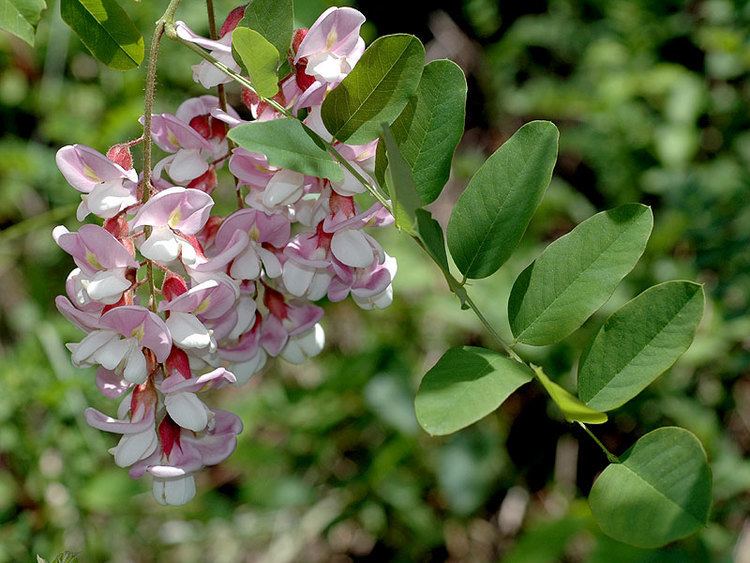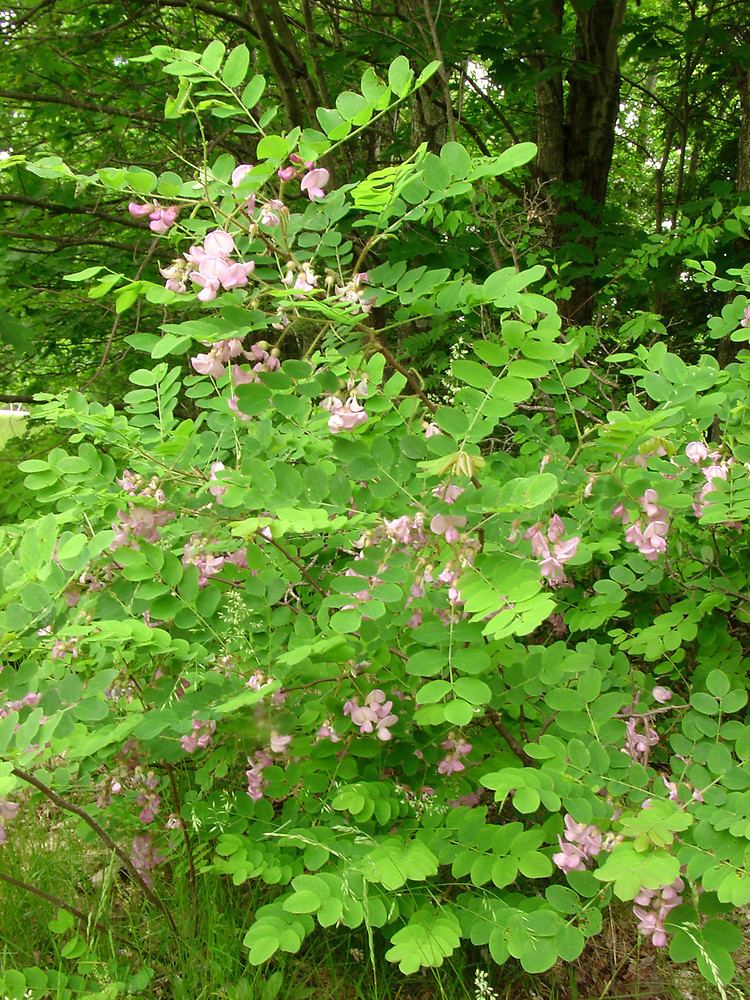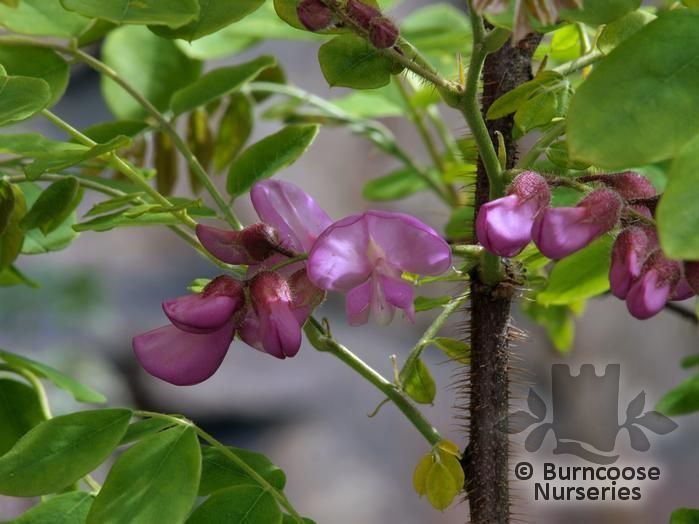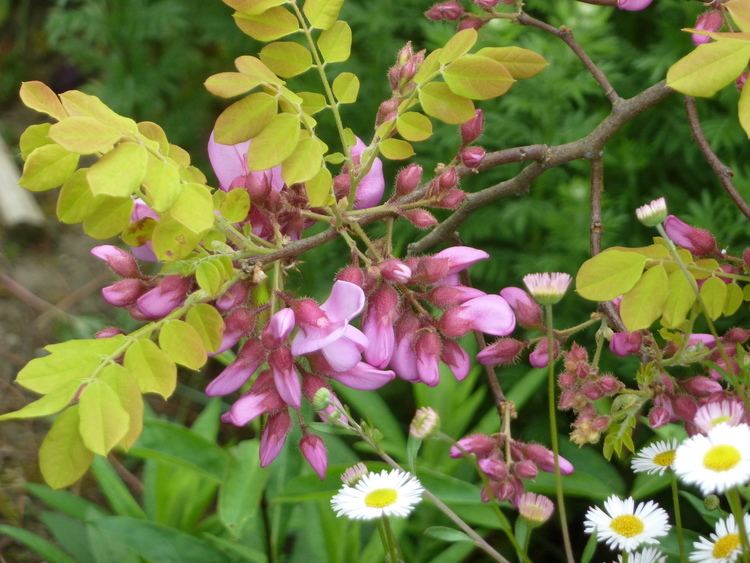Rank Species | Genus Robinia Higher classification Robinia | |
 | ||
Similar Robinia, Legumes, Robinia viscosa, Robinia neomexicana, Black locust | ||
Robinia hispida, known as the bristly locust, rose-acacia, or moss locust, is a shrub in the subfamily Faboideae of the pea family Fabaceae. It is native to the southeastern United States, and it is present in other areas, including other regions of North America, as an introduced species. It is grown as an ornamental and can escape cultivation and grow in the wild.
Contents

Description

This deciduous shrub grows to 3 meters tall, often with glandular, bristly (hispid) stems. The leaves are pinnate with up to 13 leaflets. The pink or purplish pealike flowers are borne in hanging racemes of up to 5. The fruit is a flat pod.
Ethnobotany

The Cherokee had several uses for the plant. They used the root medicinally for toothache. They fed an infusion of the plant to cows as a tonic. The wood was useful for making fences, bows, and blowgun darts, and for building houses.
Subtaxa
There are at least 4 varieties:

